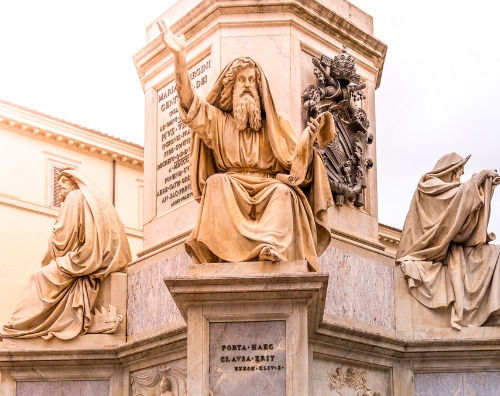Ezekiel: The Visionary Prophet of Ancient Israel
- Miss Quantum
- Jul 15, 2023
- 3 min read
Updated: Aug 12, 2023
In the annals of ancient Israelite prophets, one figure stands out for his captivating visions and profound messages. Ezekiel, also known as Yehezkel, emerged during a critical period in the history of Israel, witnessing the destruction of Jerusalem and the exile of its people to Babylon. Through his prophetic ministry, Ezekiel not only provided hope and guidance to his fellow exiles but also left an indelible mark on the religious and literary traditions of the Hebrew Bible.

Born into a priestly family, Ezekiel began his prophetic calling around 593 BCE, during the fifth year of King Jehoiachin's exile. It was a time of immense turmoil and despair for the Israelites. The once-mighty Kingdom of Judah had been decimated by the Babylonian forces led by King Nebuchadnezzar, who had laid siege to Jerusalem, razed its sacred temple, and carried off its inhabitants into captivity.
Ezekiel, along with thousands of his fellow exiles, found himself in Babylon, a foreign land far from the sacred city of Jerusalem. It was in this new and unfamiliar setting that he received his prophetic commission. In the opening chapter of the Book of Ezekiel, the prophet describes his awe-inspiring vision of a stormy sky and a divine chariot, known as the "merkavah." This vision symbolized God's presence and served as a testament to the prophet's divine calling.
Throughout his ministry, Ezekiel conveyed his prophecies through a combination of oracles, symbolic actions, and vivid imagery. His words were often filled with both warnings of impending judgment and messages of hope for restoration. His prophetic visions carried a distinct apocalyptic flavor, reflecting a belief in divine judgment, the ultimate triumph of good over evil, and the restoration of Israel.
One of the most memorable episodes in Ezekiel's prophetic career is his encounter with the "dry bones" in the Valley of Dry Bones, as recounted in Ezekiel 37. In this vision, Ezekiel is transported to a valley filled with scattered bones. God commands him to prophesy to the bones, and as he does, they come to life, representing the national resurrection and restoration of Israel. This powerful imagery symbolized the promise of hope and renewal for a people who had lost everything.
Ezekiel's prophecies were not confined to words alone; he often engaged in symbolic actions to convey his messages. In one such instance, he lay on his side for over a year, representing the number of years Israel and Judah would bear the consequences of their sins. He cooked his food over dung, indicating the defilement the people would experience in the foreign land. These dramatic acts served as visual aids, capturing the attention of his audience and leaving a lasting impression.
One notable example of Ezekiel's use of symbolic actions is his extended period of lying on his side. As a visual representation of the consequences of Israel and Judah's sins, he lay on his left side for 390 days to signify the number of years that Israel would bear the guilt of their iniquities. Following this, he lay on his right side for 40 days, representing the years of judgment on the southern kingdom of Judah. This remarkable display demonstrated the gravity of their transgressions and served as a constant reminder of the impending judgment upon the people.
Beyond his prophetic visions and symbolic acts, Ezekiel also offered teachings on individual responsibility, justice, and moral conduct. He emphasized the importance of personal repentance and turning away from sinful behavior. His prophecies sought to address the people's spiritual and moral shortcomings, urging them to seek righteousness and adhere to God's commandments.
Ezekiel's influence extended beyond his immediate audience and the tumultuous period of exile. His teachings and writings left a profound impact on the development of Jewish theology and religious thought. His vivid descriptions of divine visions and his apocalyptic imagery laid the groundwork for later Jewish and Christian apocalyptic literature. The Book of Ezekiel is regarded as one of the major prophetic books of the Hebrew Bible, inspiring countless scholars, theologians, and believers throughout history.
Ezekiel's prophetic ministry spanned several decades, and his messages continued even after the exiles' return to Jerusalem. His visionary insights and unwavering commitment to his calling make him one of the most enigmatic and significant figures in the rich tapestry of biblical prophecy.
Today, the legacy of Ezekiel endures as a testament to the enduring power of faith, hope, and divine revelation. His prophecies continue to inspire and challenge readers to examine their lives, seek spiritual renewal, and embrace the call to righteousness. Through his timeless messages and compelling visions, Ezekiel remains an enduring symbol of the human capacity for transformation and the enduring presence of the divine in the face of adversity.



Comments